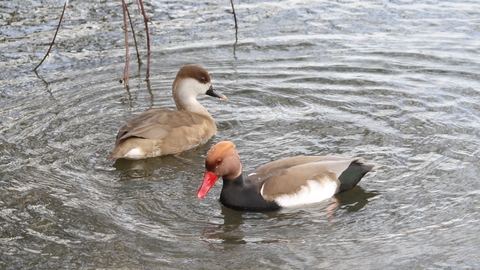Red-crested pochard (drake) © Irene Greenwood
Red-crested pochard © Irene Greenwod

Red-crested pochard pair © Irene Greenwood
Red-crested pochard
Scientific name: Netta rufina
This striking duck was introduced to the UK and is now established as a breeding bird in England.
Top facts
Category
Stats
Length: 53-57cmWingspan: 85-90cm
Conservation status
Classified as Least Concern on the IUCN Red List of Threatened Species.
When to see
All yearAbout
The red-crested pochard is naturally found in a wide range extending from southern and central Europe across central Asia, as far west as Mongolia. Its attractive appearance has made it a popular bird in wildfowl collections in the UK. Over the years, red-crested pochards have escaped from collections and nested in the wild, leading to an established population in England.It's possible that some of the red-crested pochards seen in the UK, particularly in southeast England, have arrived on their own from continental Europe. Over the last century, the European population has spread north into the Netherlands and Germany. They are migratory, flying between breeding grounds and wintering sites.
Red-crested pochards are usually found on freshwater lakes and pools, particularly with reedbeds. They often feed at the surface, but can also dive for food. In winter they gather in large flocks.
